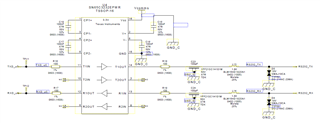Hello design team
We use SN65C3232EPWR as RS232 line driver in one of our customers product.
sometimes we found ICs which are giving garbage values at its driver output.
further we analyze output using an oscilloscope and found high frequency spikes
present at the output. This problem occurs small fraction of ICs which is about
25% from a lot. please help to solve this problem.
Thanks
Thusith
Electronics Engineer


